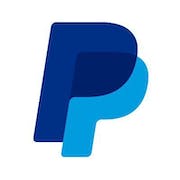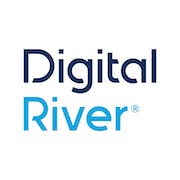Looking for the best payment processing software? Our buyer's guide provides a comprehensive overview on features, benefits and expert tips for seamless transactions.
If you're running a business, accepting payments is a crucial part of your success. That's why finding the right payment processing software can impact your bottom line and ultimately shape the future success of your company. As you evaluate available options on the market, you'll find a wide range of features and benefits to evaluate. Different payment processors offer different strengths. In this buyer's guide, we'll explore some of the key factors that you should consider when choosing one, providing you with a comprehensive overview to help you make an informed decision that will benefit your business for years to come.
What is payment processing software?
This is an essential solution that enables businesses to conduct financial transactions electronically from anywhere in the world. It automates everything from accepting payments to balancing the books, and it can improve operations and customer experience. By handling payments securely and quickly, this software streamlines the payment processes and makes transactions more efficient. Here are some of its most common use cases:
- Online purchases: This payment tool enables businesses to accept online payments from customers, particularly for e-commerce retailers. With electronic payments, companies can accept payments 24/7 from anywhere in the world, reducing operational costs and increasing customer convenience.
- Recurring billing: Subscription-based services utilize it to automatically bill customers on a monthly or yearly basis. This not only streamlines billing and reduces administrative costs, but it also ensures consistent revenue flow.
- Point-of-sale transactions: A payment processing solution comes in handy for retailers, restaurants, and other businesses that need to accept payments in-person. These solutions can process credit and debit cards, mobile payments, and direct deposits securely and quickly.
- International transactions: It can also facilitate transactions for businesses operating globally, allowing transactions in multiple currencies and languages. This simplifies the payment process, reducing risks, and improving customer satisfaction.
A payment processing tool is essential for any company, regardless of the industry or size. Retailers, service providers, e-commerce businesses, subscription-based companies, SaaS companies, marketplace companies, restaurants and hospitality industry are just a few examples of businesses that can benefit from implementing this technology. By streamlining workflows, reducing operational costs, improving customer satisfaction, and increasing revenue, this solution can help businesses achieve their financial goals while also providing a seamless payment experience to their clients.
What benefits does a payment processing program come with?
As businesses continue to digitize their operations, payment processing software has become an indispensable tool for many organizations. Here are some of its major benefits:
1. Faster payment processing: Payment processing software enables businesses to accept payments online, which eliminates the need to physically handle cash or checks. With the click of a button, businesses can receive payments instantly, reducing the time it takes to process payments to mere seconds. A Forbes survey predicts that, by 2025 40% of businesses will use digital B2B payment providers to handle their finance functions for speed, reduced terms, financing and cross-border access.
2. Improved cash flow management: It enables businesses to track their incoming and outgoing payments in real-time. This helps businesses manage their cash flow more effectively, enabling them to make informed decisions on how to allocate their financial resources.
3. Increased security: It also utilizes advanced encryption and security measures to protect customer payment information. This reduces the risk of fraud and keeps sensitive customer data secure.
4. Enhanced customer experience: The software allows businesses to offer a variety of payment options to their customers, including debit and credit cards, online payments, and mobile payments. This enhances the customer experience by offering more convenience and flexibility.
5. Improved recordkeeping: It automatically tracks and stores payment information, making it easier for businesses to create financial reports and keep accurate records for tax purposes.
10 key features of payment processing software
Today, many companies can leverage this payment application to reduce the risk of fraud. Here are 10 common features that make payment processing technology effective:
1. Secure payment processing: Processing payments securely is an essential feature of a payment processing program. It should have advanced security features to protect sensitive financial data.
2. Payment gateway integration: The system should integrate seamlessly with multiple payment gateways to give customers more payment options.
3. Compatibility with multiple devices: The software should work on a variety of devices, including desktops, laptops, tablets, and smartphones.
4. Customizable checkout: The checkout process should be customizable to meet the specific needs of a business.
5. Advanced reporting: It should provide detailed reports on transactions, customers, and payments.
6. Fraud detection and prevention: Fraud detection and prevention tools should be built-in to minimize the risk of fraudulent transactions.
7. Recurring payments: Businesses that offer recurring payment services should have an payment application supporting that feature.
8. Easy refunds and chargebacks: This solution should make refunds and chargebacks hassle-free for both businesses and customers.
9. Integration with accounting software: It must also integrate seamlessly with popular accounting solutions to streamline accounting processes.
10. User-friendly interface: A payment processing app should have a user-friendly interface that is easy to navigate and operate. This feature would help reduce the time it takes for businesses to train their employees to use the software effectively.
What to consider when investing in a payment processing platform?
When it comes to payment processing, every business has unique needs and requirements. However, there are some universal factors that businesses should consider before purchasing a solution to process payments to ensure they get the most out of their investment.
1. Security: The tool should be secure enough to prevent fraudulent payments and data breaches. Look for one that complies with the PCI DSS (Payment Card Industry Data Security Standard) and uses encryption technology.
2. Compatibility: It should be compatible with your current POS system and payment gateway to avoid data loss and technical issues. Consider one that offers plug-ins and APIs for easy integration.
3. Functionality: The payment platform should be easy to use and manage. Check whether it allows you to track sales, process refunds, void transactions, and manage chargebacks efficiently. Look for one that provides detailed transaction reports and analytics to gain insights into your business performance.
4. Cost: The price of the solution should be transparent and reasonable, without any hidden costs. Some software providers charge additional fees for things like chargebacks, refunds, and transaction disputes, so make sure you understand all the charges involved.
5. Customer support: The provider should have excellent customer service and support. Make sure you choose a provider that offers multiple channels for support, including email, phone, and chat. Read reviews and testimonials to get an idea of the provider's response times, availability, and helpfulness.
6. Scalability: The system you select should be able to accommodate your business's growth and expansion. Look for providers that offer scalable plans and can adjust to your growing business needs.
Choosing the right payment processing package for your business can make a huge difference in the payment processing experience of your customers and save you both time and money. Consider the factors mentioned above before making a decision.
Industry trends for payment processing technology
As we head further into 2024, the world of payment processing software is expanding at a rapid pace with new trends emerging every day. In this section, we'll explore the biggest payment processing trends to watch out for this year and beyond.
1. Mobile payments: With the continued growth of e-commerce and mobile usage, mobile payments are set to be a massive trend. As more customers become comfortable with shopping from their mobile phones, businesses are looking to integrate payment options that cater to this demand. Mobile wallet apps like PayPal, Apple Pay, and Google Wallet are becoming increasingly popular, and it's essential to have them as payment options for your customers. In a Mastercard global consumer study, nearly 8 in 10 consumers said they use contactless payments. This trend appears to be here to stay as approximately 74% state they will continue to use contactless.
2. Artificial intelligence: Artificial intelligence is revolutionizing the way payments are processed, making transactions more secure, streamlined, and faster. AI-empowered systems can identify fraudulent transactions, resolve payment disputes, and provide real-time analytics and insights. AI makes payment processing more efficient, reducing manual labor and costs.
3. Blockchain: This technology is becoming more widespread, and payment processing is no exception. Utilizing blockchain technology in payment processing allows for faster and more secure transactions. Blockchain enables payments to be processed without intermediaries, reducing processing times and costs.
4. Enhanced security measures: Cybersecurity remains a critical concern for payment solution providers and businesses alike. With the increase in cybercrime, providers of this tool are introducing enhanced security measures to safeguard sensitive customer data and prevent fraud. Tokenization and two-factor authentication are just some of the measures being taken to ensure the protection of financial data.
5. Integration with other software: More businesses are utilizing payment apps as part of their larger software ecosystems. This integration allows for seamless processing of payments within existing systems, which results in a more streamlined payment process for customers.
2024 promises to be an exciting year for payment processing software as the industry continues to grow and innovate with these emerging trends. As a business owner, it's crucial to stay ahead of the curve and adopt these trends to provide a seamless, secure, and efficient payment processing experience for your customers.
Conclusion
In conclusion, the strategic implementation of payment processing technology is a vital step towards modernizing your business operations and ensuring sustainable growth. By carefully evaluating your business needs and choosing a solution that aligns with your goals, you can harness the full potential of this essential tool to drive efficiency, security, and customer satisfaction.









